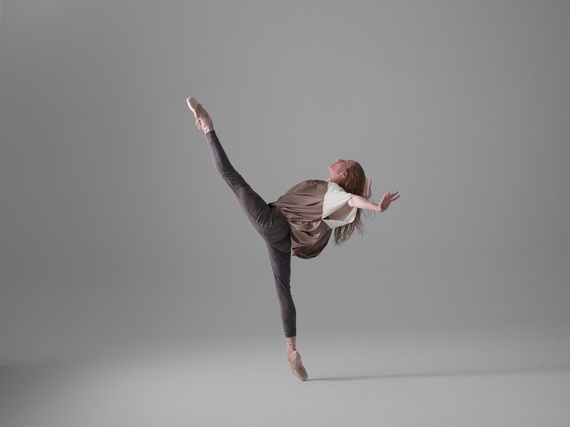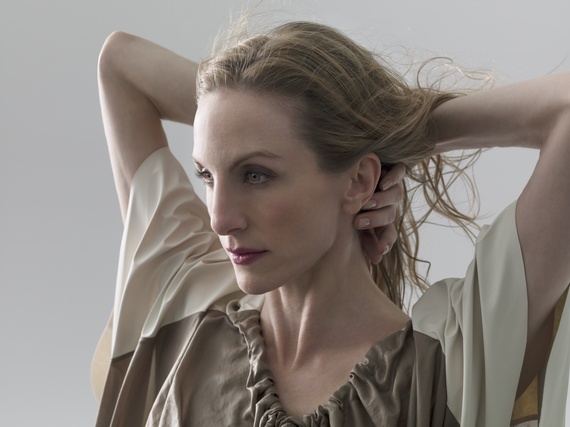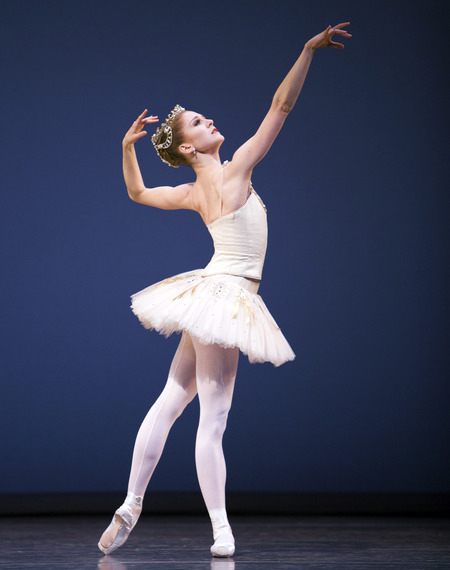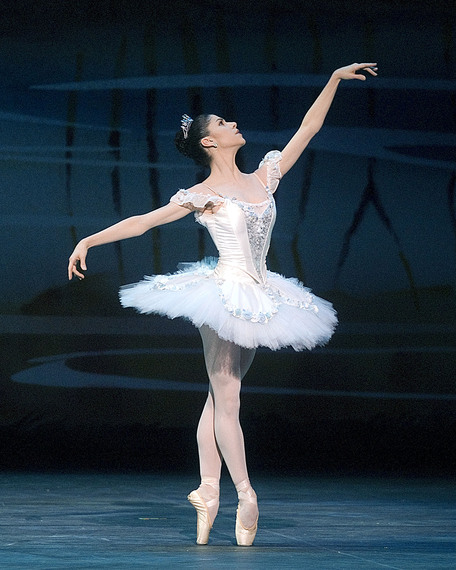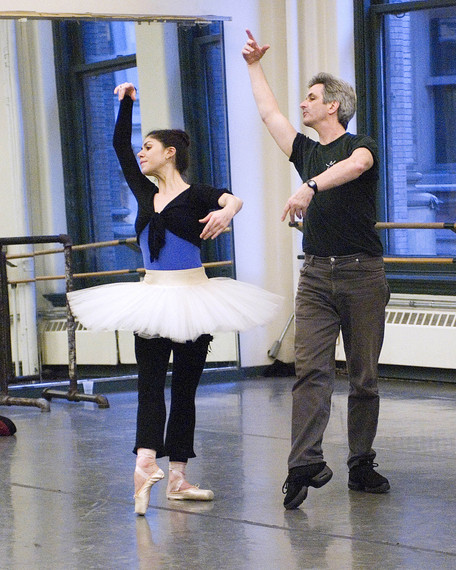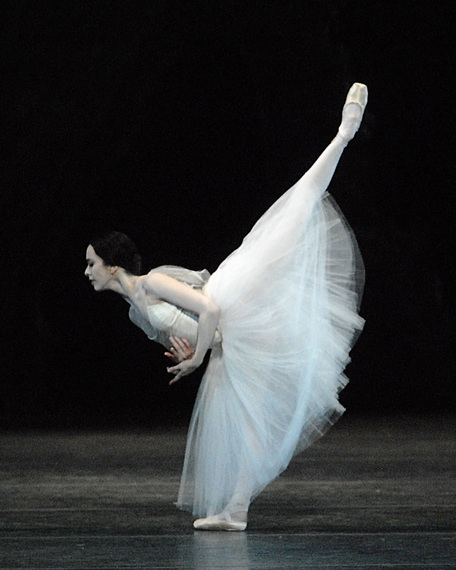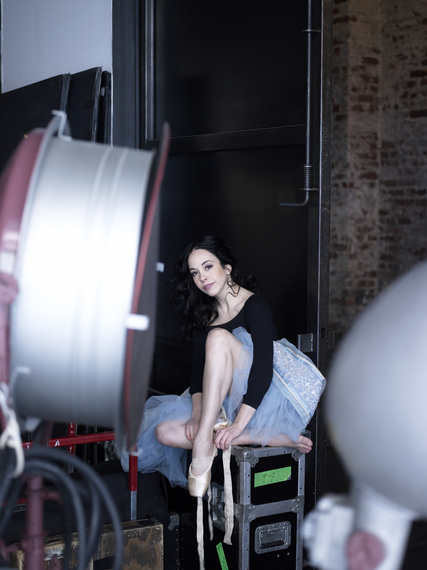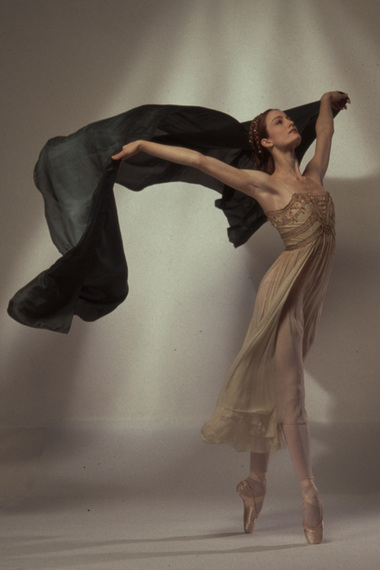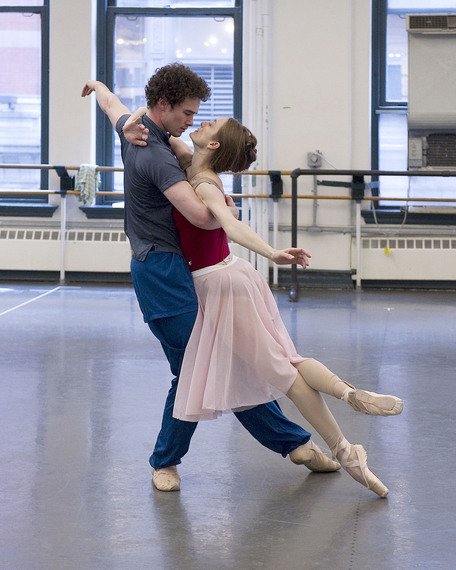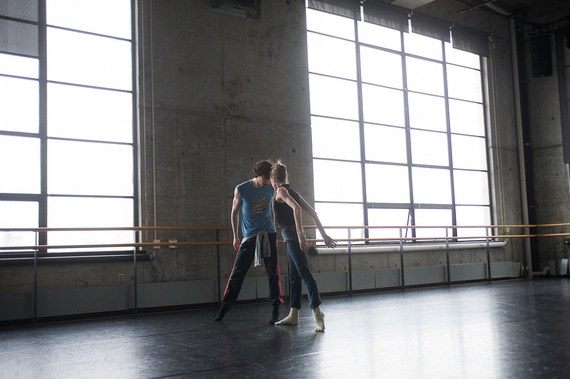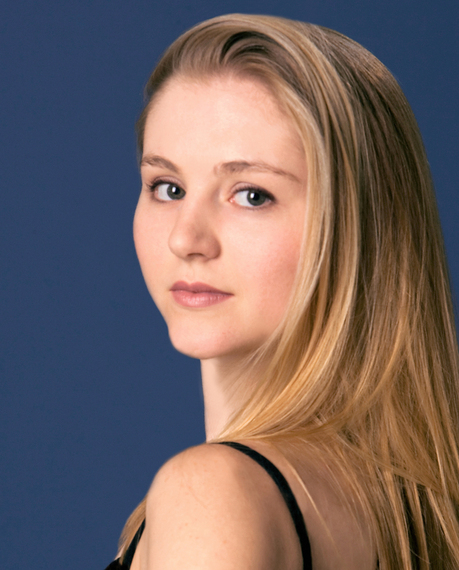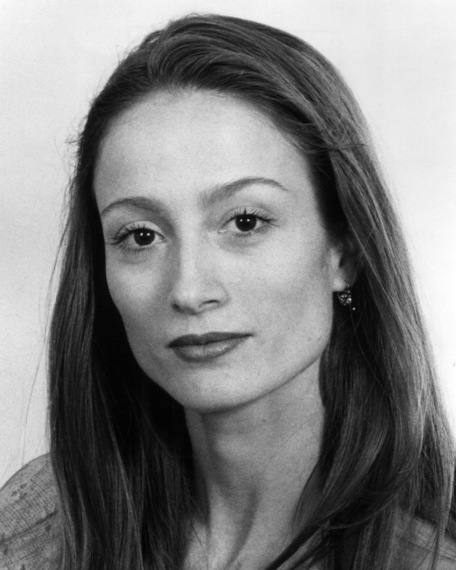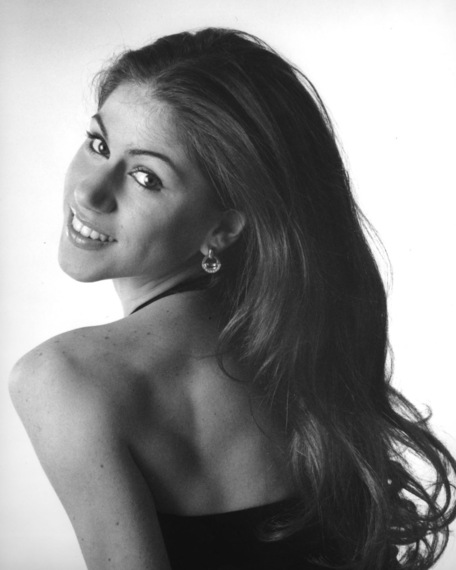This is an extraordinary time in the dance world, when five of the greatest ballerinas of our time, from leading American ballet companies, have, coincidentally, all announced their retirement within months of each other. Ballet to the People caught up with Wendy Whelan, Carla Körbes, Paloma Herrera, Xiomara Reyes, and Julie Kent to ask:
What in your view has been the most significant change in the dance world since you started out as a young dancer. How would you counsel a young dancer who is just starting out?
Wendy Whelan left Louisville, Kentucky, as a teenager to attend the School of American Ballet then spent her entire career at New York City Ballet. "... [A]n ideally modern woman, dancing with men as if part of a team, together on equal terms," says The New York Times of her qualities as a ballerina. This modern woman acknowledges:
I'm from a very different generation. There were the giant choreographers - Martha Graham, George Balanchine, Merce Cunningham, Trisha Brown - who were creating huge volumes of work... I came in at the tail end of the Balanchine [era], surrounded by his dancers.
Dancers today are not so bound by the idea of a patriarch like Balanchine. Maybe that's a good thing. They're more open to other influences... But something gets a little bit lost, watered down. Now a New York City Ballet dancer is not surrounded by Balanchine's dancers - it's a huge change for a company that represents his work. We're now floating a little more than the previous generation was. Dancers have more freedom today in how to dance Balanchine - and more opportunity to dance other artists' work. While New York City Ballet no longer has one strong, profound resident choreographer, they do have an amazing young one in the ranks [Justin Peck].
Mr. B grew his company like a garden. It's harder to find a company built around one choreographer's work these days; it makes dancing in a company very different. It's up to each dancer to choose one [environment] over the other: whatever makes you a better dancer.
Brazilian-born Carla Körbes also trained at SAB and started her career at New York City Ballet, but spent the last decade at Pacific Northwest Ballet in Seattle. Her interpretive power astonishes, from the delicate airiness of her partnership with Karel Cruz in the central slow movement of Alexei Ratmansky's Concerto DSCH to her haunting, feverish Sleepwalker in George Balanchine's La Sonnambula. Though only 33, she has witnessed a sea change in the dance world:
Thanks to technology, dancers today have a much wider view of the dance world than when I first moved to New York. At age 14, coming to the U.S., all I knew was American Ballet Theatre, Baryshnikov, Nureyev, and some of the European companies. I barely knew anything about Balanchine. Today, dancers have so much more information, and are much more mobile. Kids are traveling everywhere to go to summer programs, funding themselves with Kickstarter - putting their dreams on the Internet and seeing if they will pan out.
There are positives to moving around, and changing companies: you put things in perspective, you can compare living and working conditions. Living in one city, you tend to take things for granted, your view is much more narrow. In Europe, a dancer can leave for a year and still keep her original contract. You get to explore and grow as a person and as a dancer. A legacy like Wendy's of 30 years in one company is so rare today.
Technology can be amazing: for example, last year at Vail [the Vail International Dance Festival], I had been working with [choreographer] Brian Brooks. I had to leave, but he said "No problem. If we need more time, we can work via Skype."
In 1996, when I first arrived in New York, Skype was not an option!
Then again, sometimes too much information is confusing. Sometimes knowing less, having fewer options is good. Dancers haven't really changed as much [as some people believe] - even with new training and all the information we get about diet and physical therapy. Dancers will still push too hard, will still get injured. We get clashing advice from nutritionists. We're always trying to learn from the experts. But, eventually, we go back to our instincts. I've learned, after 18 years of gathering information, to eat then check in with my body - how do I feel? I've learned to eat whatever makes my body feel good. As a teenager, I was just so confused, overwhelmed by all the information.
Paloma Herrera, like Körbes, came to New York at a very young age. At 15, she was offered a contract with American Ballet Theatre, and, like Whelan, has spent her entire career with one company.
Even the most jaded ballet-goers rhapsodize over the luxurious unfolding of her leg in développé out of a supported pirouette, and in the articulation of her gloriously arched feet. While her passion onstage has hardly dimmed, she concedes:
It's a new generation now, especially with the new media. I've danced with the most incredible partners, including Angel Corella, Jose Manuel Carreño, and Vladimir Malakhov - I loved that time, it was a golden era.
Now I want to watch ballet from the audience, to join the people who take the time to go to the theatre, to experience live theatre. I don't feel connected with this generation anymore. People don't seem to have the time anymore, to meet, to have coffee, to have a conversation over dinner. They walk around but they don't see things, don't see the city they live in.
I took chances when I was very young. I was offered a contract with the most wonderful company in the world. I didn't think too hard about it, made a very quick decision. My parents back in Argentina were incredibly supportive. They gave me so much freedom - that security, knowing you had their love no matter what. But I could never advise anyone else to live their life like I've lived mine: 100% in the moment, with no plans for the future, ever. I never thought about what was coming next - I still don't. Of course I worked really hard and gave my life to dance. You also have to be lucky. Some people have all the talent, but not the passion, or the luck. Some work so hard but simply don't have the talent. You have to look at your own gift, and your own limitations.
And you need humility. Because ballet is about going back into class every single day, rehearsing everyday, fixing everything - it's about the working process, not about being a superstar. Some dancers today want to be celebrities. But that is not why I dance. I'm not on Twitter and Facebook, I live in the theatre, on the stage. That's where the excitement is. No two performances are the same. Even in the same role in the same ballet, night after night, every performance is unique: some are great, some disastrous.
One of my most thrilling experiences was performing at the International Ballet Festival of Havana. Ballet in Cuba is like soccer in Argentina - such a commotion! Naturally it was televised. And the audience knows the choreography by heart - you don't dare change a step!
Cuba is very much on Xiomara Reyes' mind. A tiny dynamo whom Bachtrack describes as "bringing sunshine wherever she goes," Reyes trained at Cuba's National Ballet School. For her, the recent defrosting of U.S.-Cuba relations is earthshaking:
Anything that can mend a rip in our world is an Alleluia moment for me. The Cuban soul is very deeply hurt, and I believe it will be a long process of healing. This [announcement] is a step in that direction, I hope. For a Cuban dancer it means the opening of more choice and possibility, and that is of infinite value.
She bids farewell to American Ballet Theatre after 14 years, before which she spent seven years with the Royal Ballet of Flanders. She, too, notes with ambivalence the rise of social media and its impact on the dance world:
With Facebook, Instagram, Twitter and other media, dancers have new opportunities to be noticed and, while I think these are wonderful outlets that give more people the opportunity to follow dancers whom they might never see perform live, I also believe it may be overwhelming for a young dancer who is trying to find her own voice. Social media can become a rat race. Dance is not only an external endeavor but also an internal search... Our need for exposure, this thirst for communication and public recognition, has a tendency to push us outward before we work inward.
To a young dancer I would say: be aware of that trap. Take the time to find out what dancing really means to you, how it shapes you as a human being. Nourish yourself with the art you create - explore what that means. And then: dance, live, share!
Recently dubbed by The Washington Post "a font of regal beauty" in the role of fairy queen Titania, Julie Kent will bow out in a final performance of Romeo and Juliet.
Looking back over her 29 seasons with American Ballet Theatre, she marvels at the sweeping social change:
Perestroika. The end of the Cold War. The fall of Communism. The arrival of the Internet, cellular communications, social media and branding. All had great impact on society, the arts, the ballet world.
Because the world is now smaller, Russian dancers no longer have to defect to be seen in the West. Everyone is everywhere, all the time - in reality, and virtually on Facebook. This is not necessarily good or bad: everyone has to understand life is forward-moving. Dancers often look back and think their time was the greatest compared to today - but they think that mainly because they were young then!
It's more challenging now for a young dancer. They want international careers, so they feel they can't stay with one company.
Yet some things haven't changed much for dancers. When I debuted in Swan Lake in 1993 that was one performance, one matinee. My next Swan Lake was a year later, and also just one performance. It's difficult to develop as a dancer with so few opportunities to tackle the big roles in multiple performances - because the process of learning in the rehearsal studio is different than the process of learning on stage through multiple performances. Talking with Isabella Boylston who debuted as Odette-Odile in 2013, I realize it's been a similar challenge for her.
It's a tough balancing act for big companies to give dancers opportunities to grow. Audiences also want to see foreign guest stars - which is exciting for us, too, in the company, but it makes it harder for up-and-coming dancers to develop. I was fortunate to have partners who wanted me to dance with them around the world - Julio Bocca in Argentina, Vladimir Malakhov in Finland, Jose Manuel Carreño in Japan, Roberto Bolle in Italy, etc. So even though I stayed with one company, I had opportunities to perform roles multiple times, and grow in that way.
For younger dancers today, there is also more pressure to be a star. It used to be that people wanted to do something, now they want to be something. "I want to be a principal," instead of "I want to dance." But being a star and having a fulfilling career are not always the same thing.
Soon after I was given my corps de ballet contract, I was invited to appear in the movie Dancers, opposite Baryshnikov. After the film came out, I visited Nora Kaye [the former dancer, who collaborated with her husband, director Herbert Ross, on the film] who was on her deathbed in Los Angeles. She said, "You could have a career in film. Are you interested?"
"I want to dance," I replied. It was so simple - that is what I had wanted to do since I was 7. I always had that sense of purpose, that driving force.
One of my platforms for young people is to focus on the process and the pursuit of excellence, not the destination. The work is our labor and our reward. Once you get where you're going, it's over!
What's next for each of these ballerinas? Ballet to the People wanted to know.
Wendy Whelan will crisscross the country with Restless Creature, a series of contemporary duets by four young choreographers, which premiered at Jacobs Pillow last summer then traveled to the Royal Opera House in London. Restless Creature's American tour starts in San Francisco in mid-January and winds up at the Joyce Theatre in New York in May.
A new project with Edward Watson of the Royal Ballet will premiere in London in July. And a third piece of opera/dance theatre is simmering at the Brooklyn Academy of Music: an adaptation of the ancient Japanese Noh drama Hagoromo, about a celestial spirit whose magic power resides in a robe of feathers.
Carla Körbes wraps up a splendidly varied season at PNB this spring then powers on to Vail again this summer. Her knee is getting better, she says, and she's excited to immerse herself in the festival. What would she like to dance? More Balanchine, if she had her wish! But she is also keen to work with new choreographers, found the experience working with Brian Brooks hugely inspiring.
Retiring at this age, I'm still young and I'm excited. It's the end of company life for me, which gives me new options, frees me to do other things in the art world. Before I left City Ballet, at a time when I was struggling, I spoke with Eliot Feld, who told me: "Leave when you're happy." I never forgot this. I never take any of this for granted.
Julie Kent will write a memoir, a book which she hopes will reflect her voice as an American dancer, a female artist, a passionate arts advocate, as well as a wife and a mother of two children.
I have expressed myself without words for so long. The life of a ballerina seems so mysterious from afar, but the reality is that there are things that many people from different backgrounds and professions can connect with.
Ballet to the People looks forward to her setting the record straight - after Darren Aronofsky's blood-and-feathers study in ballerina paranoia, the Black Swan horror flick.
Paloma Herrera bids American audiences Adieu with a final performance as Princess Aurora in Sleeping Beauty in June, but her Argentinian farewell comes later in the year. Globe-trotting balletomanes are prepared to travel long distances to catch her Tatiana in Onegin in October at the Teatro Colón in Buenos Aires, a dramatic role she has long prized. After her final curtseys, she plans to indulge her love of theatre, of reading, and listening to music.
Ballet has been my bubble, my life, my religion... Now I will enjoy this time in a different way.
Xiomara Reyes will dance a final Giselle in May. Reflecting at this crossroad, she knows dance will continue to be an important part of her life:
Dancing has been my life's journey ever since I can remember. I have found that to stand at the barre every morning is a kind of meditation, a spiritual experience.
I love teaching and sharing with young people the amazing world of ballet, which is why I've been co-directing the IBStage program for two years.
I feel like I'm standing in front of this huge buffet of possibilities and I'm taking my time to chose. Not because I don't like what I see, but because I want to honor my standstill point: that moment where you have to stand still and regroup, before throwing yourself back into the whirlpools of life.
Collectively, these five ballerinas have redefined virtuosity and grace for the art form in the 21st century - their natural gifts honed by artistic sensitivity and perseverance. No one is born to be a prima ballerina: it takes extraordinary discipline, acumen and gutsiness.
Will one of them eventually take a leadership role in the ballet world? None of the five appear to have sought it out.
One thing that has not changed over the span of these ballerinas' careers is the shortage of women at the helm of ballet companies. Karen Kain is now the longest-running incumbent artistic director of a major company, having run the National Ballet of Canada for ten years. Tamara Rojo took over English National Ballet two years ago. When Brigitte Lefèvre retired after a remarkable 19 years of steering Paris Opera Ballet in a bold, new direction, she was succeeded by Benjamin Millepied. In Britain, Monica Mason called the shots at the Royal Ballet for ten years, replaced by Kevin O'Hare in 2012. In America, Lourdes Lopez has been at the head of Miami City Ballet for just two years.
As audiences for live theatre and dance continue to shrink, along with the public and private funding so critical to keeping these companies afloat, can new artistic leadership make a difference? Is it time for a reigning ballerina to be handed the reins?

